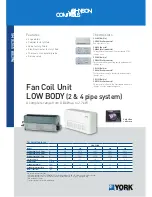
8785081
200A AC/DC Dial Control TIG Welder 202KE
V4.2
14
For technical questions call 1-800-665-8685
c. The electrode or welding wire;
d. Any metal parts on the electrode holder or wire feed torch.
e. The output terminals.
2. Insulate yourself from the electrical current and ground using electrical
insulating mats or covers big enough to prevent physical contact with the
workpiece or ground.
3. Connect the ground clamp as close to the welding area on the workpiece
as practical to prevent welding current from traveling along an unexpected
path and causing an electric shock or fire hazard.
a. An option is to attach the ground clamp to a bare metal spot on a
metal workbench. The circuit will complete as long as the workpiece
is also in full contact with the bare metal workbench.
4. Only use insulated connectors to join welding cables.
5. Ensure there are no contacts between the workpiece and work area that
would allow it to ground, other than through the ground cable circuit
6. Do not exceed the duty cycle or amperage required for the type of welding.
Excessive amperage can cause the deterioration of protective insulation
and create a shock hazard.
7. Unplug the welding unit when not in use as the unit as current is still
entering the unit, even when it is turned off.
8. Frequently inspect input power cable for wear and tear, replace the cable
immediately if damaged. Bare wiring is dangerous and can kill.
9. Do not use damaged, under sized or badly joined cables.
10. Do not disconnect the power cord in place of using the ON/OFF switch on
the tool. This will prevent an accidental startup when the power cord is
plugged into the power supply.
a. In the event of a power failure, turn off the machine as soon as the
power is interrupted. The possibility of accidental injury could occur, if
the power returns and the unit is not switched off.
11. Make certain the power source conforms to requirements of your
equipment (see Specifications).















































